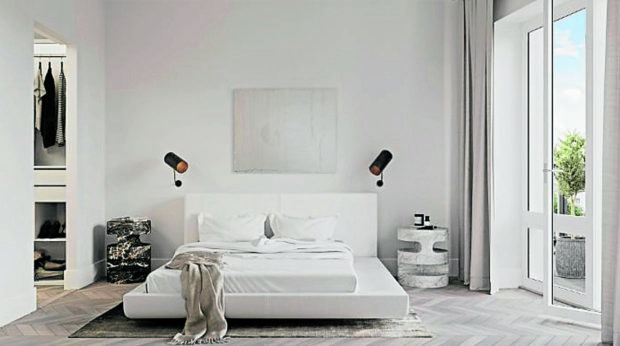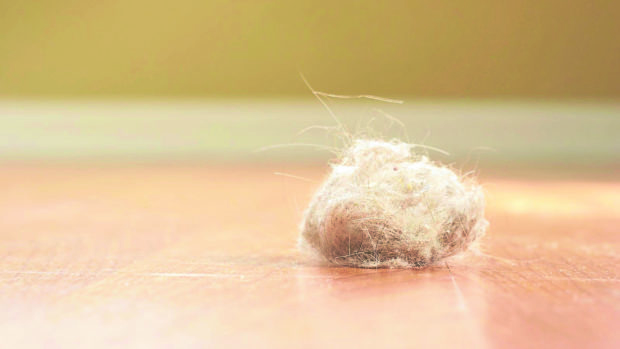How dust affects your health and pocketbook

Designers can simplify details to minimize nooks and crannies that are hard to reach and see which can become magnets for dust. —MYDOMAINE
In the popular TV series Downton Abbey, the memorable opening scene of each episode shows a house maid dusting the chandeliers of the castle with a feather duster.
The scene underscores the fact that whether it is a humble home in the city or a grand castle in the countryside, they both share a similar predicament—they are both exposed to that fine, tiny powdery substance called dust.
Do you know that the average household collects about 40 pounds of dust every year? And yet, dust is a topic seldom mentioned in the design and the construction industry. Some designers do not consider dust in homes as a major issue—not until the homeowner complains or struggles with the workload needed to keep their home clean, not to mention the effect on their health and pocketbook.
Dust gatherers in homes
Dust in homes is an important consideration for designers. It is not enough to adopt a particular design style for aesthetic considerations alone. How dust is gathered and disposed in homes are just as important.
Some architectural and interior features in homes where dust gathers are open shelves and cabinetry, light coves, wall niches, top of kitchen cabinets and doors, windows with insect screens, wide windowsills, baseboards, moldings, and the hard-to-reach ledges in the shower.
Other dust gatherers are ceiling fans, drop lights or chandeliers, picture frames, art objects on walls and even plain walls whether concrete or drywall. Louvred doors, venetian blinds and panel doors and windows with intricate designs are also top dust gatherers.
Other areas often overlooked are the top of airconditioners, top of refrigerators, underneath the furniture, electronic screens, and plants, both fake and real.
Do you know which is the top spot that people forget to dust? The answer: it’s the ceiling.
What is dust?
Dust is a concoction of unpleasant and disgusting stuff, which includes dead skin and hair cells from humans, the carcasses and waste products of microscopic creatures such as dust mites and worn-out bits of clothing and furniture.

Dust is a concoction of unpleasant and disgusting stuff, which includes dead skin and hair cells from humans, the carcasses and waste products of microscopic creatures such as dust mites and worn-out bits of clothing and furniture. —MOLEKULE BLOG
According to researchers at the University of Arizona, most dust originates outdoors and comes through the air, rather than brought in through people’s shoes. They tested and validated their research using data collected by the US Environmental Protection Agency. The most common sources outdoors are soil, sand and rock from natural erosion, including pollen and pollution.
How dust affects our health
Dust inhalation may lead to irritation of the eyes, sneezing, coughing, hay fever or asthma attacks. If carried over many years, dust inhalation in high concentrations may reduce lung function in the long term and contribute to disorders like chronic bronchitis, asthma, emphysema, chronic obstructive pulmonary disease. Smokers and those with heart conditions could be easy victims.
People who are more likely to develop health problems from exposure to high levels of dust include babies and young children, elderly people, 65 years and over, and people with pre-existing respiratory conditions.
Addressing dust in homes
Dust cannot be avoided because all solids eventually break down. However, indoor dust can be minimized through a variety of techniques. Thorough regular dusting is a major step in maintaining healthy air quality in your home. For starters, designers can simplify details to minimize nooks and crannies that are hard to reach and see which can become magnets for dust.
Strategies to reduce dust in homes
Health experts highly recommend using dust and personal protective equipment before starting on a major cleaning process, whether done at home or at work.
Hardwood or tile floors are preferable over carpeting which can never be completely clean even with thorough vacuuming.
Frequently wash bed sheets, blankets, duvet covers, pillows and sofas where dead skin accumulate. If possible, place pillows and mattresses inside zippered dust covers that trap out the dust
Clean floors by mopping or vacuuming with a dust filter. Sweeping tends to spread dust around without getting rid of it.

Regularly clean or replace the air filter in the airconditioning system. This is normally located at the back of the front panel. Dirty coils and filters make the airconditioner work harder and consume more energy. —ST. LOUIS HVAC
Regularly clean or replace the air filter in the airconditioning system. This is normally located at the back of the front panel. Dirty coils and filters make the airconditioner work harder and consume more energy. If you have pets or allergies, clean your filters more frequently. Cleaning your airconditioning unit helps to keep it in good working condition.
Use door mats outside and inside your front door to reduce the dust brought into the house. Our Asian neighbors take off their shoes when entering the house.
Roller shades, which can be wiped down easily, are preferable over venetian blinds which collect dust easily and are very hard to clean.
To prevent unwanted dust build-up, non-airconditioned and unused rooms like attics and basements should be properly sealed.
Seal all registers and vents with thick plastic cover held down by strong adhesion tape over your vents, to prevent any particles from getting trapped in your system. This must be done before doing your house renovation.
Other dust control measures
To reduce the all-pervasive hard urban development common in many cities, Singapore, the Garden City, provides linear parkways, green lungs, and water bodies to promote climatic moderation and purer air.
In addition, extensive tree planting and living green surfaces throughout the urban area create a cool pleasant atmosphere, that help in the dissipation of pollutants and heat and reduce dust.